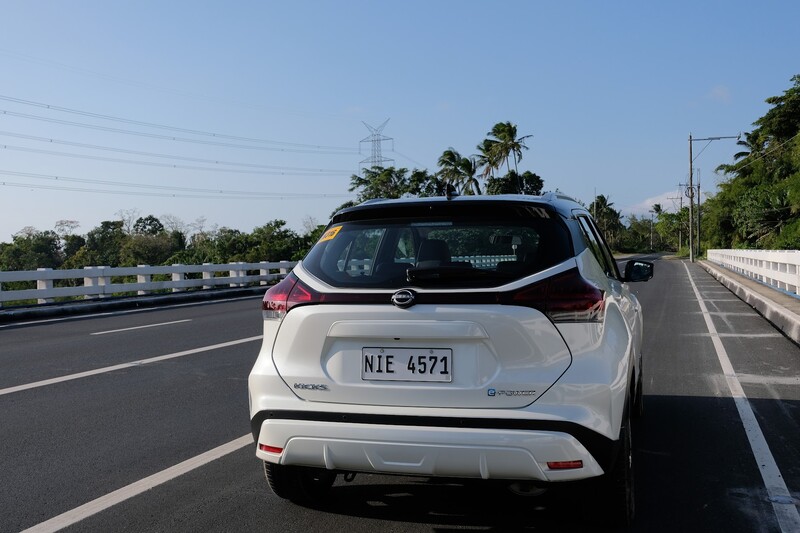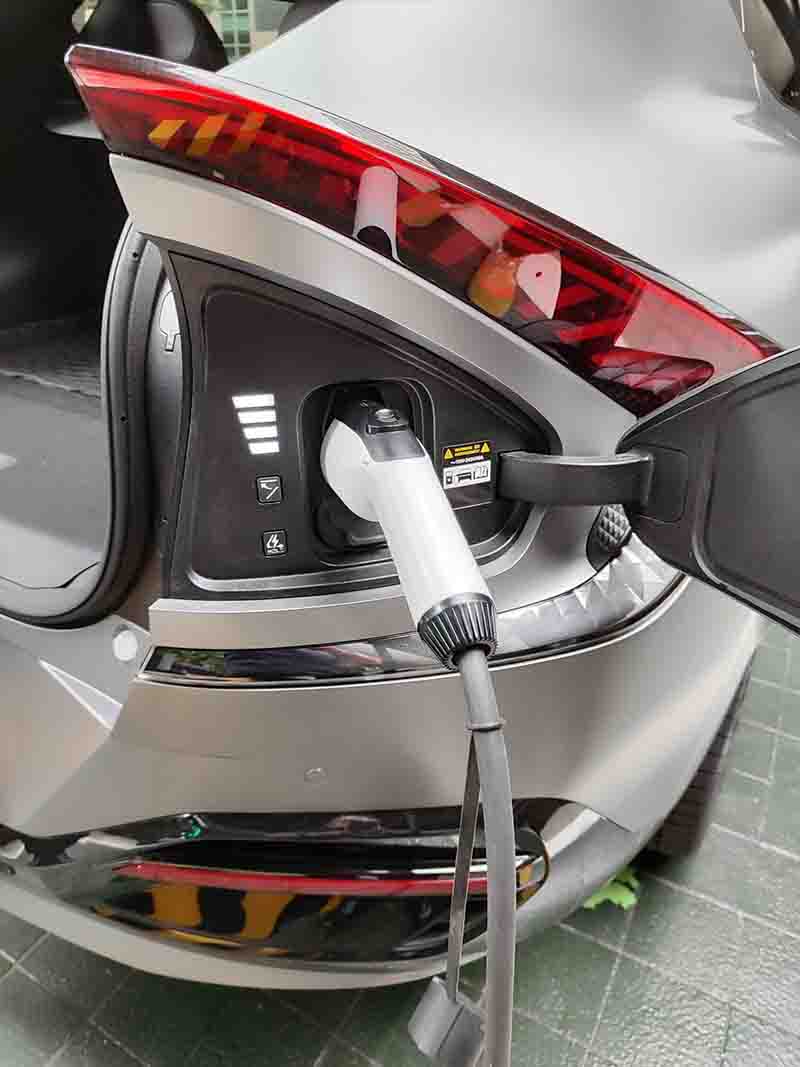THE NISSAN KICKS was launched just in August last year and is arguably the most sought-after pure battery electric vehicle in the country today. Note the description as a pure battery electric vehicle. Anyone who has a concern with that description should check the vehicle’s schematics first.
After a week of pushing the car to the edge of its power limits, my conclusion is that the Kicks is not just a mobility solution. It is a cure for a specific, automotive-related mental health issue too: range anxiety.
Not applicable
Psychologists have not peer-reviewed and listed range anxiety as an illness, though they acknowledge it as a form of psychological stress, leading to negative feelings and sometimes unfounded fears because of a “range situation.” This is a situation wherein a driver of a battery electric vehicle becomes anxious of getting stranded and not arriving to the intended destination because the battery will run out.
This range anxiety issue is not applicable to the Nissan Kicks.
There is so much to talk about its power delivery, handling, well-decked and designed interiors, the exterior that draws a fresh and new feeling from onlookers and a sporty impression at that too. Let me leave those impressions to my colleagues because I agree with most of them.
Expected yet surprising performance
There is very little I can say about how the Kicks delightfully accelerates and how the car nimbly drives over the many imperfections of the Southern Tagalog Arterial Road (and recharges the car profusely), adroitly negotiates the South Luzon Expressway, up to the almost flawless Skyway extension and down to the tacky North Luzon Expressway to the San Fernando exit.
These four roads afforded a test drive of both curated (on the Skyway extension up to 60kph) and faster acceleration at specific sections of SLEX, many descending stretches of road northbound along STAR, and the slow afternoon congestion of the NLEX provided various terrains, and traction for the Kicks.

It performed the way a Nissan is expected to perform. Near flawless, delivering confidence, riding comfort but some surprises too.
The biggest surprise to me is that when stuck in traffic, (for example, at the congestion or slow drive in many sections of the NLEX’s or along EDSA’s rush hour, I noticed that it actually produced the most charging. This is unique to the Kick’s e-Power (read about that later) set up. The best range is recorded because the engine is mainly idling while waiting, and little or no battery power is consumed. At moments when the power goes down to the trigger level (and the engine starts to charge it) there is no motion and thus no power is extracted from the battery.
Overcoming inertia and the initial momentum needed to move the car uses most of the energy, as in an ICE vehicle. The physics you can’t fight, but you can outsmart is a little sometimes.
Active ingredient: e-Power
If the Kicks were a pill it would be a benzodiazepine but without the drowsiness. Active ingredient: e-Power.
Essentially the Kicks is driven 100% of the time by an electric motor, thus no vroom but a lot of zooms. You will detect something purring under the hood–that’s the gasoline-powered engine, spinning a generator to charge a battery to power the motor to spin the wheels. By doing so the emissions are managed to the minimum since the engine basically moves at the same rate to charge the battery. Unlike a hybrid there is no sharing or changeover of power from electric to gasoline, thus the term we coined, “un-hybrid.”
 As a solution to range anxiety, Kicks is a quick and spirited one, because drivers can use the motor as much as they want without being scared of losing power.
As a solution to range anxiety, Kicks is a quick and spirited one, because drivers can use the motor as much as they want without being scared of losing power.
And to dispense this medication, Nissan developed the ‘e-Pedal.’
e-Pedal is a single control that gives takes away the fatigue and manages the stress caused by driving in traffic. One step launches the Kicks, but release the pedal and it will decelerate requiring no action on the brake pedal unless a full stop is needed. Using Eco or Sport mode, it can even provide regenerative braking to charge the battery.
Limited battery range a cause for concern? No.
Admittedly, the Kicks has a limited battery range. But that smaller battery also reduces the overall weight of the car and the penalty on the range that brings. Since it runs purely on electricity, the battery can drain within a couple of minutes or so when driving even at 60 kilometers per hour. The EM47 electric motor drains the 2.13-kWh lithium battery at a calculated rate of .147 kilowatt per kilometer at 60 kph. That’s about six to seven kilometers, on ECO mode, and even less on SPORTS mode.
But no worries, the benzodiazepine is rapidly dispensed via the 1.2-liter (the small but very efficient 3-cylinder HR12DE gasoline engine) spins up the generator for the 2.13-kWh lithium-ion battery.
I’ve driven the Tesla Model S and X over long distances in New York and California, the Vinfast VF8 around a resort island in Vietnam, and just very recently, the Weltmeister W5, and though these vehicles delivered efficient, long haul drives of over 400 kilometers each, none of them could compare to the range “anxietylessness” of the Kicks and its self-generating personality.
P2.61 per kilometer
One aspect of the test drive keeps resounding: P1,000 of Cleanfuel’s 91 RON gasoline to get a running average of P2.61 per kilometer at P63.40 per liter. I calculated 383 kilometers of driving distance (Laguna, Quezon City, Pampanga, Sucat back to Laguna) which is roughly 24 kilometers per liter at its best–about the same per liter range as was determined during the Kicks media test drive activity which drove all the way up to Bicol.
I had run 889 kilometers already and the gauge confidently said I still had 58 kilometers more before I decided to fill up. In my head, I assumed it was already running on fumes. Then at Cleanfuel in Los Baños, I loaded up 42 liters which meant an average of 21 kilometers per liter.
Driving modes
As in most electric vehicles the transmission has been dispensed with, replaced by electronics and software to manage how the motor acts to the driver inputs. The way to control it is a more intuitive sliding shifter, like a sequential unit but without the lever. A button activates reverse (making sure you don’t mistakenly shift into it) and the large P in the center means ‘park.’
Of the four modes of transmission, “B” is the most fascinating. “B” heightens regenerative braking, a process of recovering energy by spinning the motor to reverse its use from the power unit to the charging unit. Using this mode, along the long descending roads of the STAR, the Kicks was able to recover almost 100% capacity from 75% in just a few kilometers.
Specs rundown

On the upper left side of the center console is the push button start/stop beside among other controls the electronic parking brake with auto hold, and the drive mode selector.





